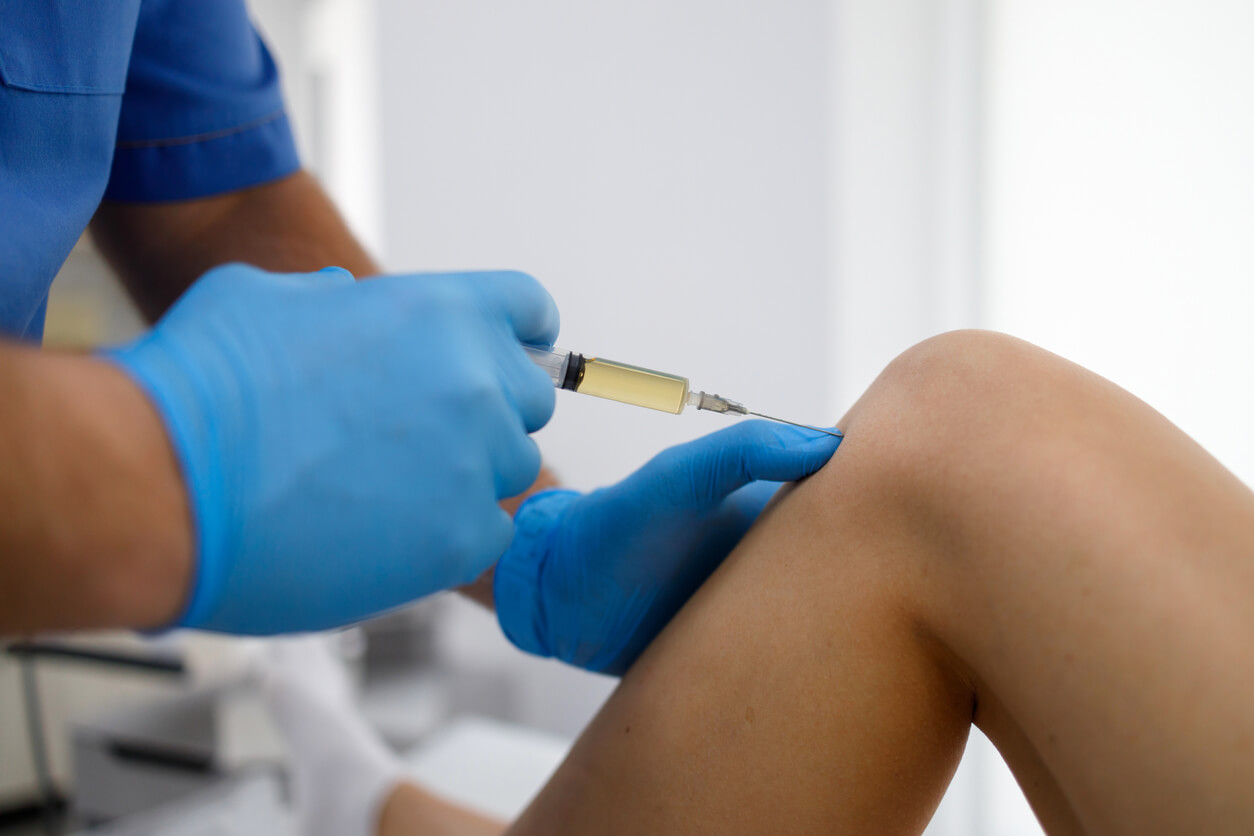
Imagine a world where sports injuries heal faster and more effectively than ever before. This is not science fiction – it is the reality of regenerative medicine. This field uses advanced techniques like PRP (Platelet-Rich Plasma) and stem cells to repair injured tissues. It is a game-changer in sports medicine, offering hope and improved recovery options for everyone, from professional athletes to weekend warriors.
Let us discover how these cutting-edge regenerative medicine treatments are transforming the landscape of sports injury recovery.
Understanding PRP (Platelet-Rich Plasma)
PRP is an innovative treatment in the field of regenerative medicine, particularly in sports. It is derived from your own blood and is rich in platelets, the body’s natural healers.
These platelets are tiny but powerful cells in our blood that are crucial for clotting and, importantly, healing. PRP is essentially a concentrated dose of these healing cells.
How PRP Works in Sports Injuries
When an athlete gets injured, the body’s natural response is to send platelets to the site of injury to start the healing process. PRP therapy amplifies this process.
Your sports medicine physician will culture concentrated platelets from you and inject them directly into the injured area. This boosts the body’s healing mechanisms where it is needed most.
The PRP Therapy Process
The process of creating PRP is relatively straightforward but needs to be done carefully. Blood is drawn from the patient, just like in a regular blood test.
This blood is then placed in a centrifuge, a machine that spins at high speeds to separate the different components of the blood. The platelets are isolated and concentrated, and then, this platelet-rich concoction is extracted from the mix.
Once prepared, the PRP is injected into the injured area. This could be a damaged tendon, a sprained ankle, or a knee suffering from arthritis.
Stem Cells and Their Role in Healing
Stem cells are the body’s master cells, unique and powerful due to their ability to develop into various types of cells. From muscle cells to brain cells, they have the potential to become almost any cell in the body.
This remarkable versatility is what makes stem cells a cornerstone in regenerative medicine, especially in the realm of sports injuries.
Stem Cells in Sports Medicine
In sports medicine, stem cells are hailed as a game-changer. Their role in healing is pivotal because they do not just repair damaged tissues, they have the potential to regenerate them.
When an athlete suffers from a serious injury, like a torn ligament or muscle, the damaged area often heals with scar tissue, which is less functional than the original tissue.
Stem cells, however, can differentiate into the specific types of cells needed for optimal repair, potentially restoring the injured area to its pre-injury state.
The potential benefits of stem cell therapy in sports injuries are immense. It can lead to:
- Faster recovery times
- Reduced pain
- Decreased inflammation
How Stem Cell Therapy Works
The process begins with harvesting stem cells. They can be extracted from various sources in the body, such as:
- Bone marrow
- Adipose (fat) tissue
Once collected, these stem cells are then processed and concentrated. The next step involves precisely injecting these cells into the injured area. This can be a complex procedure and requires the expertise of specialized medical professionals.
Once injected, the stem cells start to interact with the damaged tissues, promoting healing and regeneration. They release growth factors and stimulate the body’s own repair mechanisms.
This process can lead to the regeneration of healthy, functional tissue, replacing scar tissue or damaged cells.
When to Consider PRP or Stem Cell Therapy
Deciding when to explore PRP or stem cell therapy in sports medicine is vital. Here are some key indicators of when to visit your sports medicine doctor:
- Persistent Pain: If you have ongoing pain from a sports injury, especially if traditional treatments have not helped, it is time to consider regenerative therapies.
- Chronic Conditions: Athletes with long-term conditions like tendonitis or osteoarthritis can benefit from PRP or stem cell therapy to improve function and reduce discomfort.
- Slow Recovery: If your recovery is slower than expected, these therapies can accelerate healing.
- Non-Surgical Options: Prefer non-surgical treatments? PRP and stem cell therapy are minimally invasive alternatives.
- Preventative Measures: Consider these therapies to proactively maintain joint health and reduce the risk of future injuries.
- Professional Guidance: Consult a sports medicine doctor for personalized advice based on your injury and goals.
Remember, regenerative therapies are not a universal solution. Consult a specialist to determine if they are suitable for your unique situation.
The Best Sports Medicine Physician in Austin, TX
By using the body’s own resources, PRP and stem cell therapies offer a natural and effective path to recovery. Whether you are a seasoned athlete or love to play sports for fun, these advancements bring a promise of safer, quicker, and more complete healing.
If you are searching for the best sports medicine physician in Austin, TX, look no further than All-Star Orthopedics of Austin’s very own Carolyn M. Hyde. Call our helpful staff today at (512) 346-4933 if you have any questions. You can also simply submit an online appointment request form to book a consultation with the top orthopedic surgeon near you.
We look forward to serving you!





